SECTION THREE
As gold mining petered out, California increasingly became productive in agriculture.
This was predictable since the state’s population had just exploded and all these people needed to eat. In addition, farmers were finding out what crops did well in the Mediterranean climate and were valuable as exports.
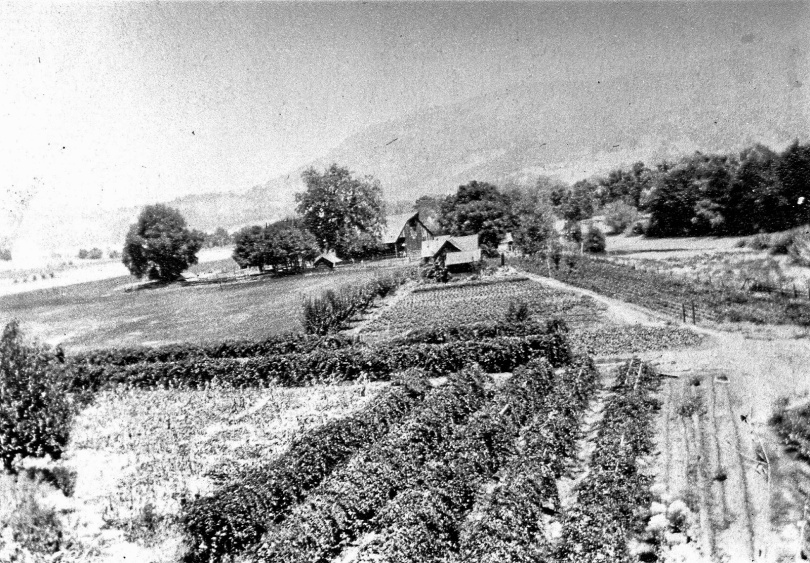
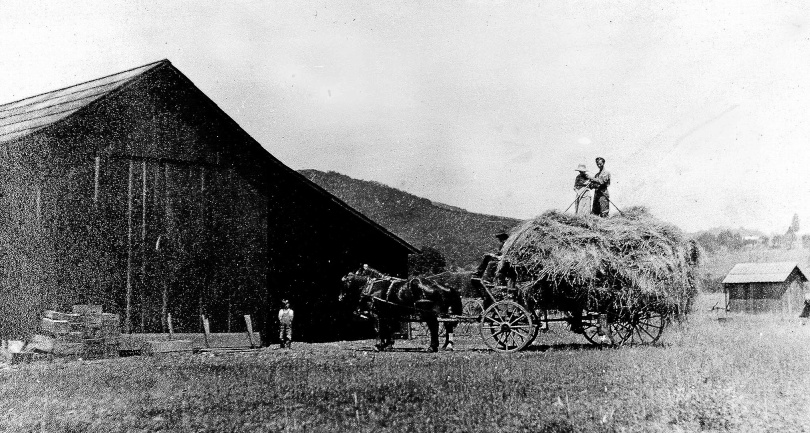
I painted the haying scene and homestead from these photos of the Hunt ranch in Coyote Valley, one of many long-established farms in the area. It is appropriate and bittersweet to memorialize it in the mural since the ranch is now under the waters of Lake Mendocino, after construction of the 1958 Coyote Valley Dam.

Then in 2019 I visited a barn that is very much like it.
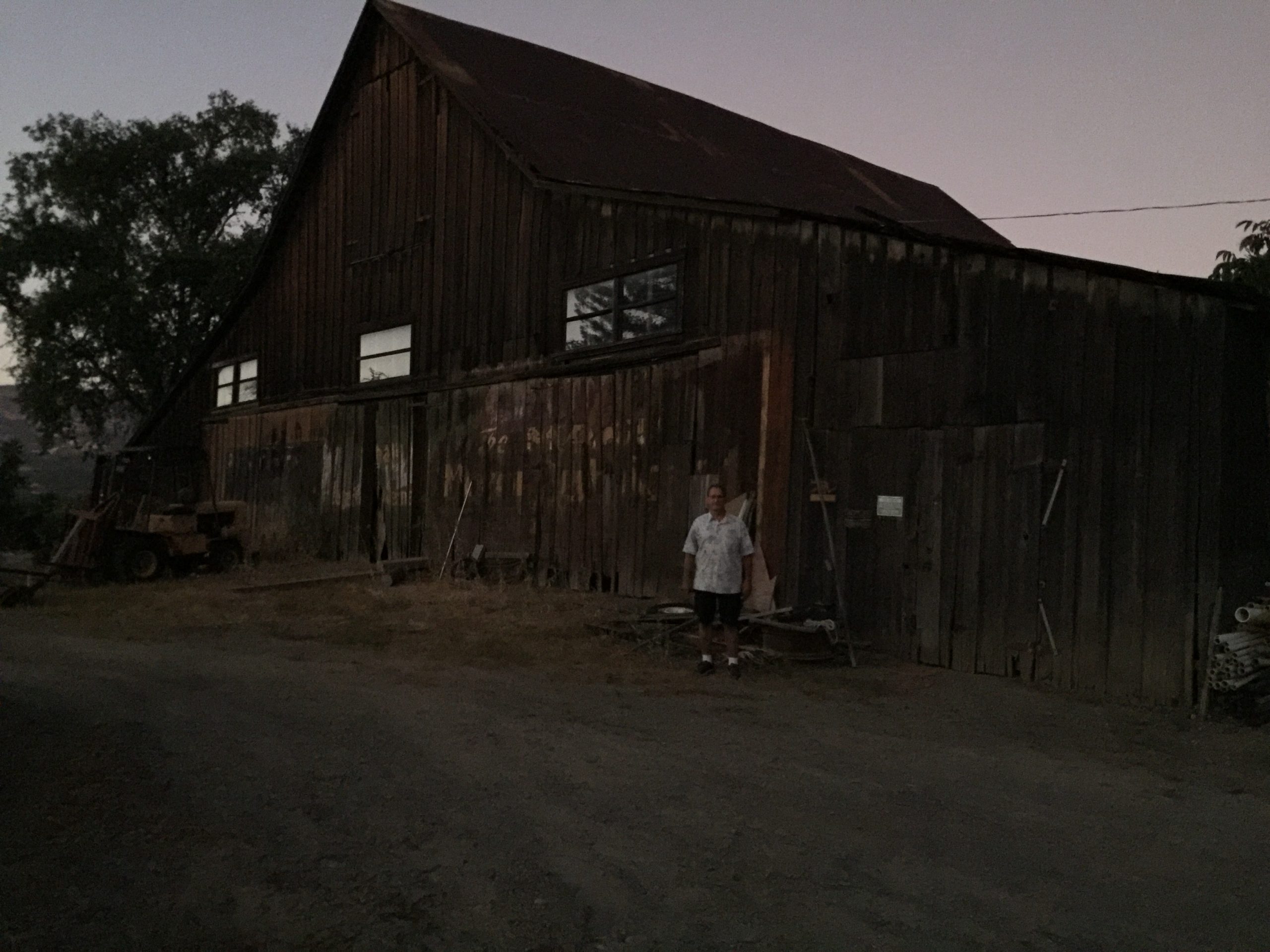
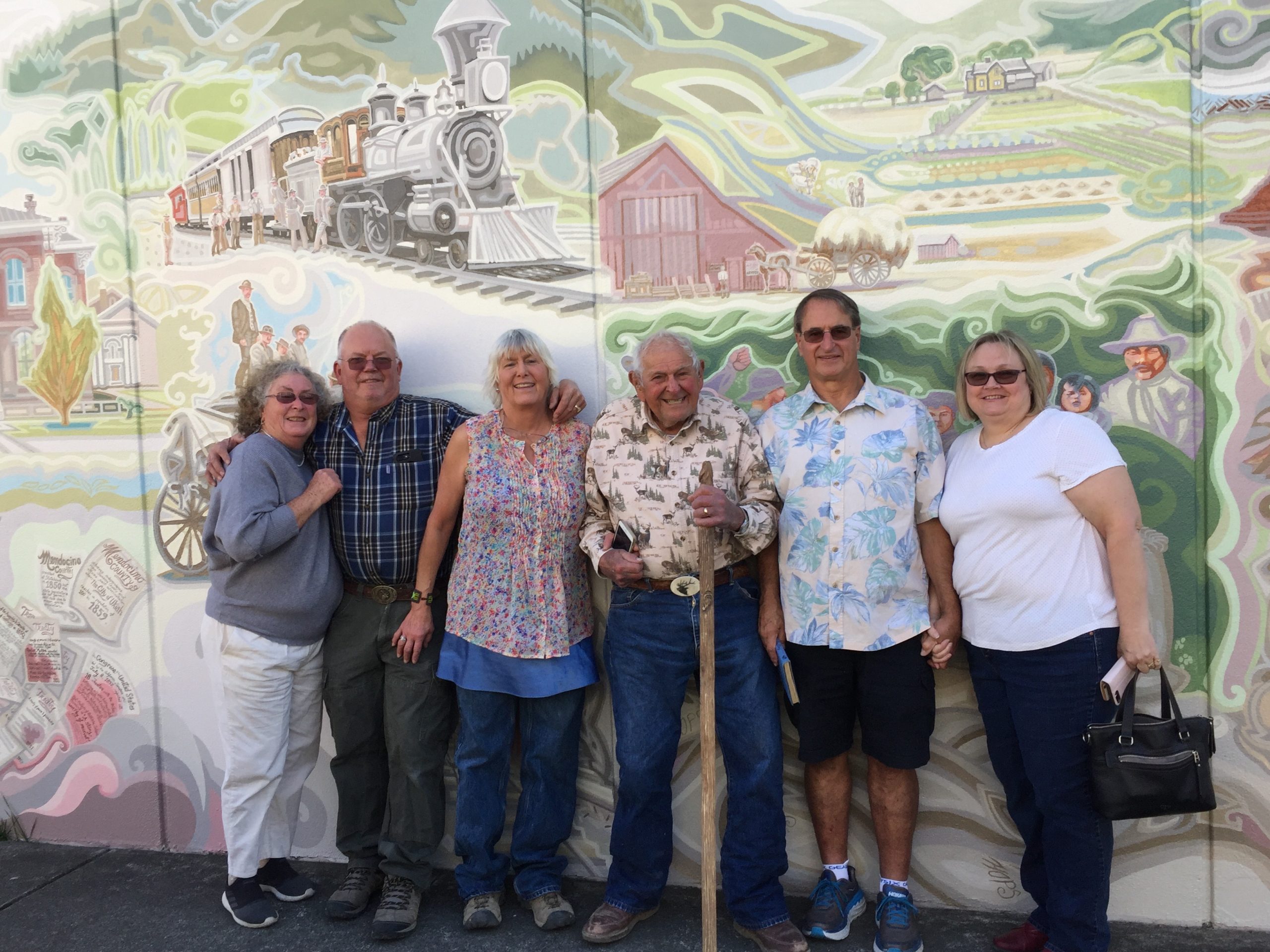
The barn is patterned on that of the Keiffer family, whose ranch is in the center of Hopland. Notice the “Farm Bureau Member–Keiffer” and “Henderson Brothers” signs just in front of the horse. Chris Keiffer (above) grew up here, as did his sister Ramona Keiffer, who was the mother of the well-known local Poma family.
Read the extensive account of this local family’s history in the Historical Society of Mendocino County Journal, Volume 59, December 2020.
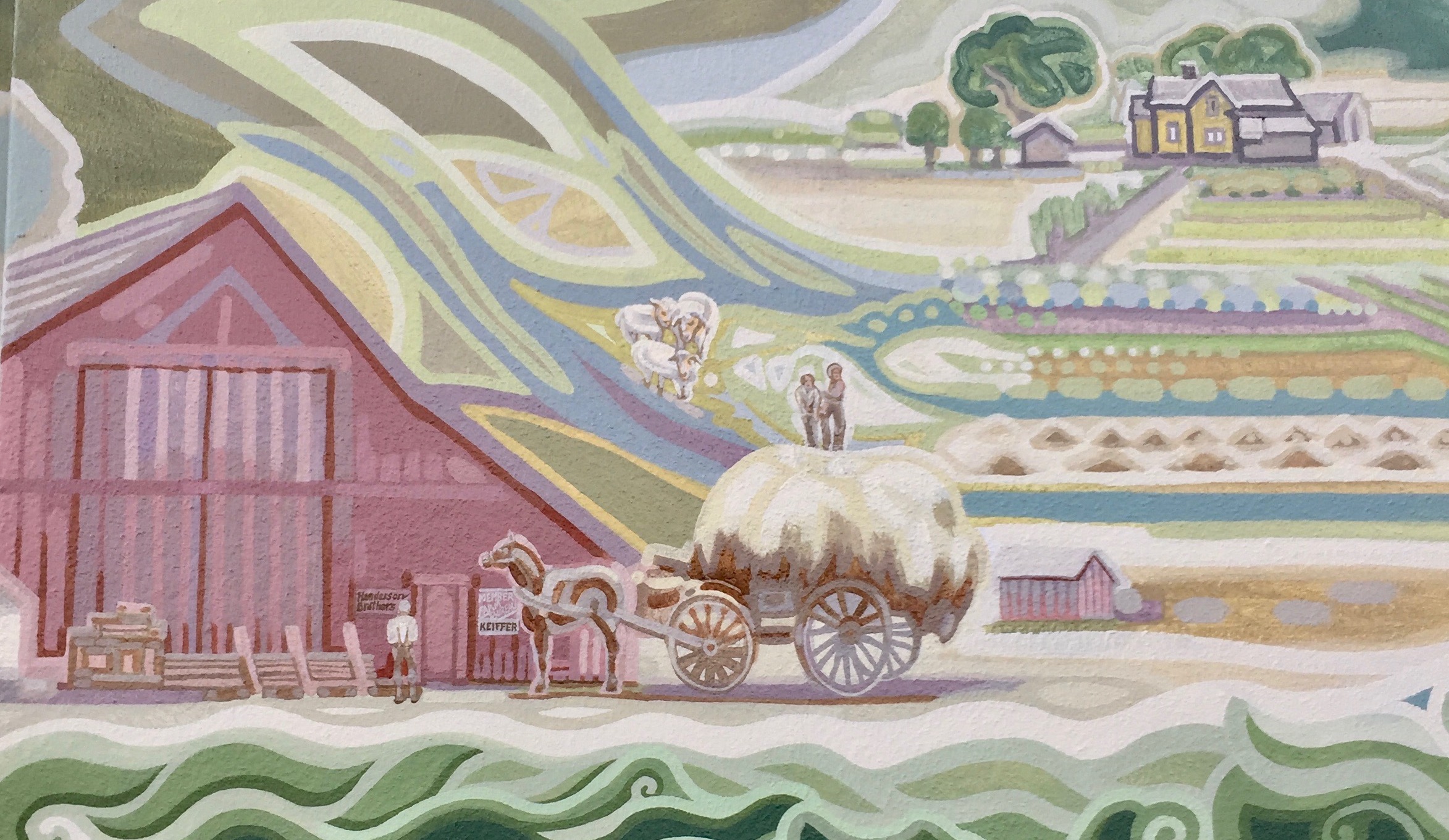
The beer-flavoring flower of the hops plant thrived in Ukiah’s climate and hops became the dominant crop, peaking in 1885. Mendocino County was the third largest producer of hops in the state. At the turn of the century, pears and grapes were also major crops.
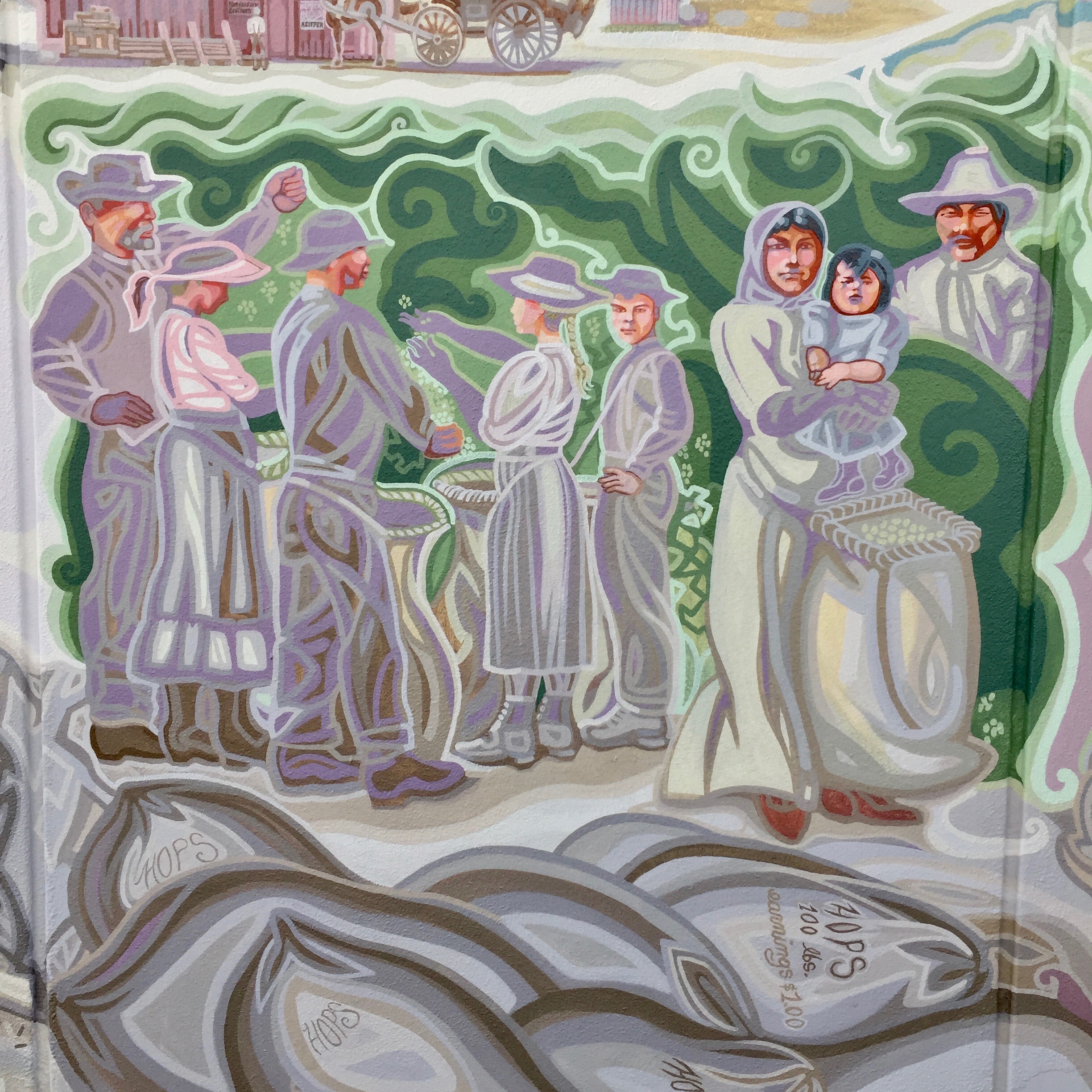
The scene of two families picking hops draws on two historic photos, the Native family on the right from 1880 and the other from around 1900. Men, women, and older kids would take to the fields for several weeks in August/September to earn extra money. A hundred-pound sack of the hops blossoms brought the worker $1.00, and he or she could usually pick 2 or 3 bags per grueling day.
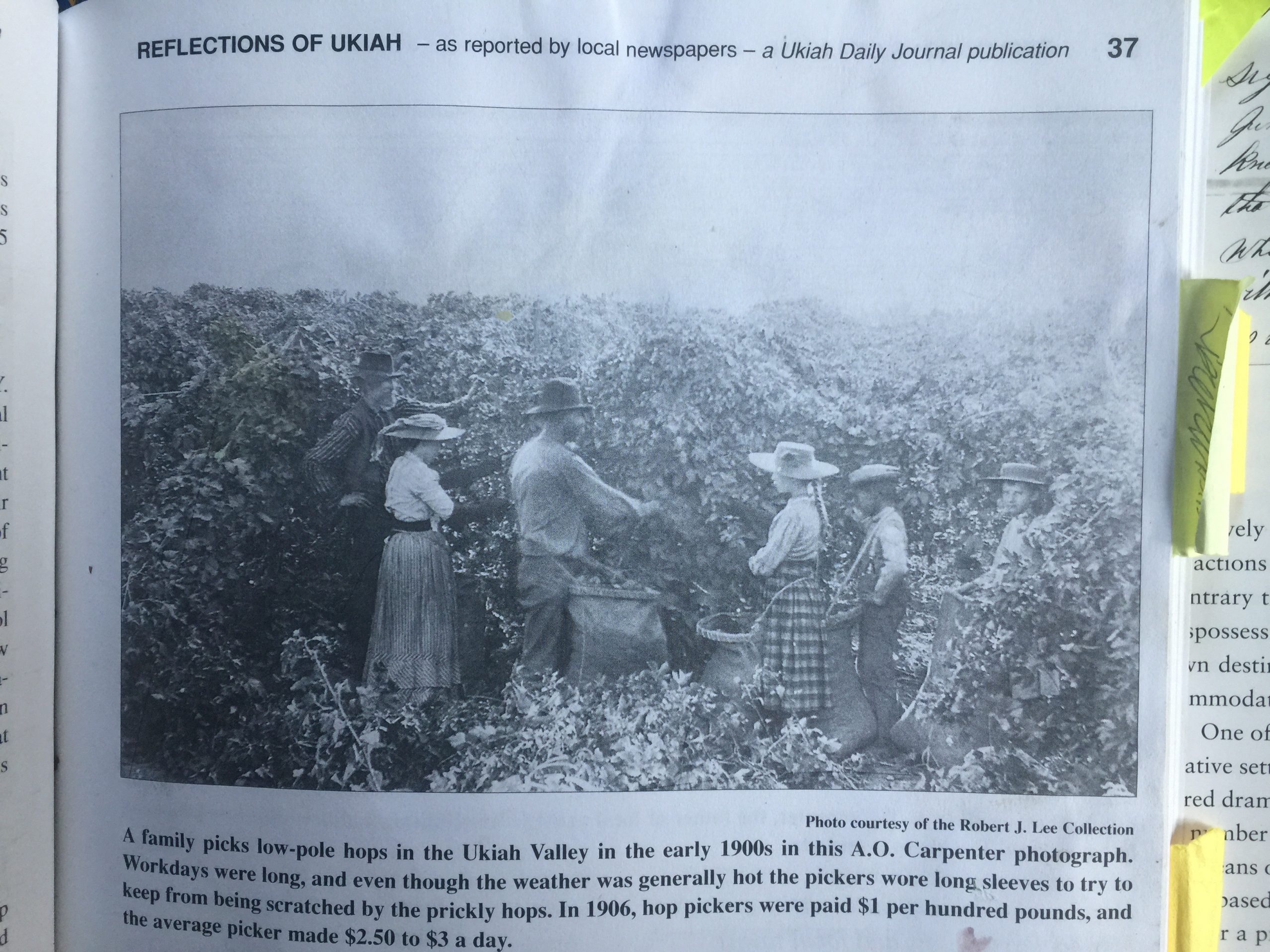

The women wore long dark gloves to protect themselves from the scratchy plant. Apparently, the men didn’t care.

Sheep were introduced to California in 1769 by the Franciscan friars. Maintaining flocks continued until the livestock population was nearly wiped out due to post-Gold Rush demand for meat. This led to a 550,000-sheep importation along the New Mexico trail.
Sheep ranching has been an important part of northern and central California rural life ever since. This panel shows sheep grazing in the distance beyond the scene of hay baling.
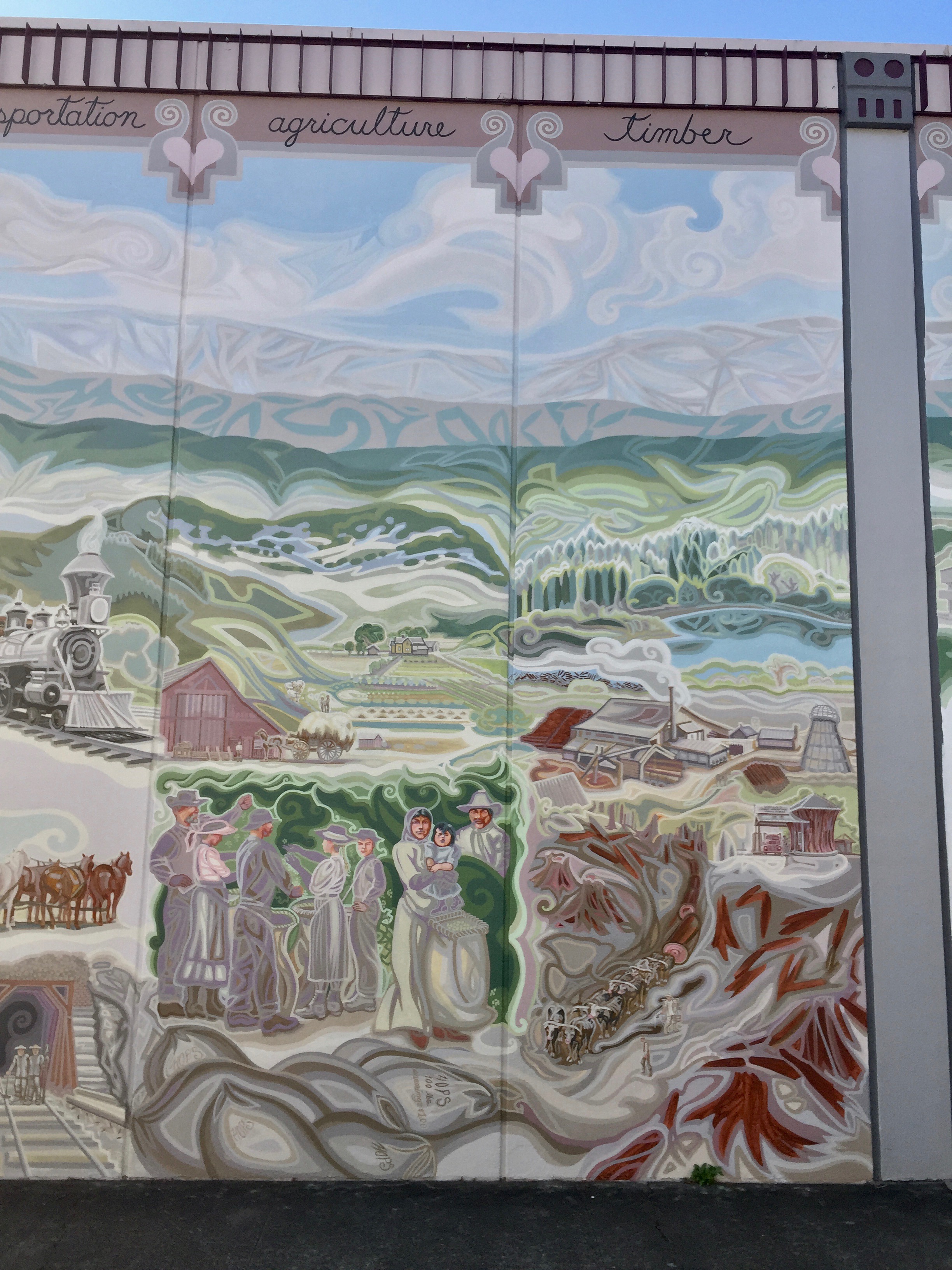
Next panel: